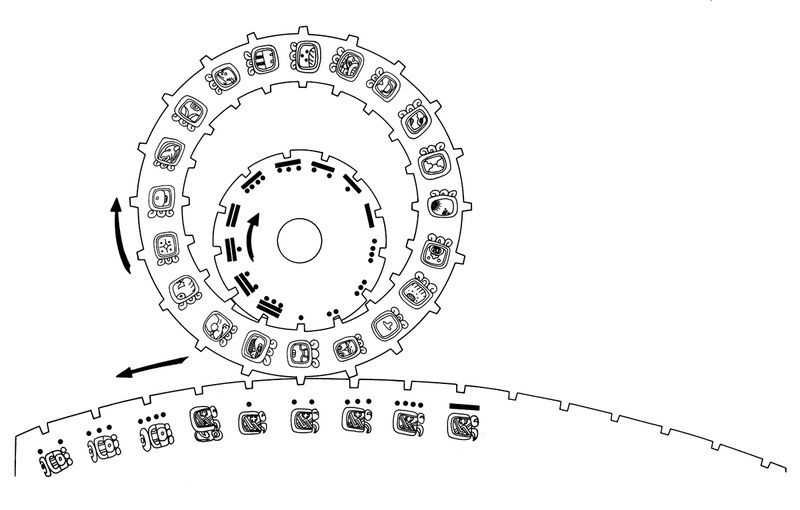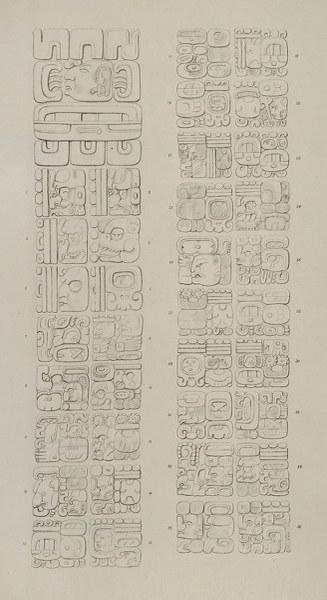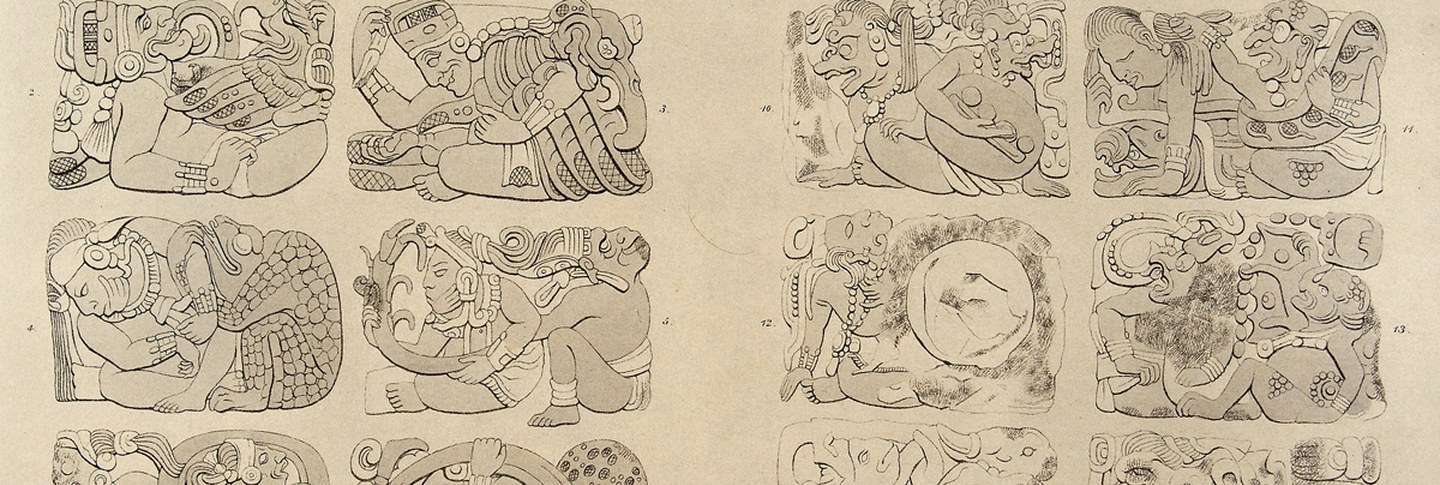The Tzolk’in and the Haab

The Maya counted time with three calendars: the tzolk’in, the haab, and one we call the Long Count.
To count the days in a year, the Maya used two counting cycles: the tzolk’in and the haab.
The tzolk’in is a cycle of 260 days, with a sequence of twenty day-names divided into thirteen-day “weeks.” There are several theories regarding the origin of the 260-day cycle. Two hundred and sixty days is the agricultural growth cycle in Mesoamerica. It is also the gestation period of the human female and the interval of the appearance of Venus.
The haab is a 365-day cycle similar to our solar year. It consists of eighteen months of twenty days each, with a five-day “short month” at the end, to total the 365 days of the solar cycle.
In the representation below, the smallest, interior gear bears symbols of the thirteen day-numbers that mesh with the twenty named days on the exterior gear. Together, they represent the tzolk’in. The largest gear, shown in part along the bottom of the drawing, represents the haab. When combined, the two calendar systems produce the Calendar Round.
![Calendar Round Diagram showing engagement of tzolk’in wheel of 260 days (A) -- [here labeled with the Aztec term tonamalatl] -- and haab wheel of 365 positions (B); the combination of the two giving the Calendar Round, or 52-year period. From Sylvanus Morley, An introduction to the study of Maya hieroglyphs, 1915.](https://www.doaks.org/resources/rare-books/an-introduction-to-the-study-of-the-maya-hieroglyphs/calendar-round/@@images/e15a7af1-2ee6-475e-ba05-58525e009766.jpeg)
The Calendar Round
The Maya linked together the tzolk’in and the haab to create a larger cycle of fifty-two years, a cycle we call the Calendar Round. Only after completion of fifty-two years would the same combinations of tzolk’in and haab repeat. The Calendar Round was used to plan planting, hunting, leadership changes, and war. Because it was used to plan religious and ritual events, it is also called the Divinatory Calendar.

Long Count
In order to keep track of hundreds of years of history as well as to record celestial observations, the Maya developed a third calendar system, the one we call the Long Count.
Similar to our year count, the Maya Long Count moves forward one place per year from a specific base date. The Maya base date is August 12, 3114 BC. Scholars have not yet determined the significance of this date.
Exhibit Items
Calendar Round
Day Symbols
Month Symbols
Temple of the Cross: Palenque
Copan, Honduras. Stela D
One dot for one year; one line for five years
Calendar wheel from book of Chilan Balam
Books of the Jaguar Priest








